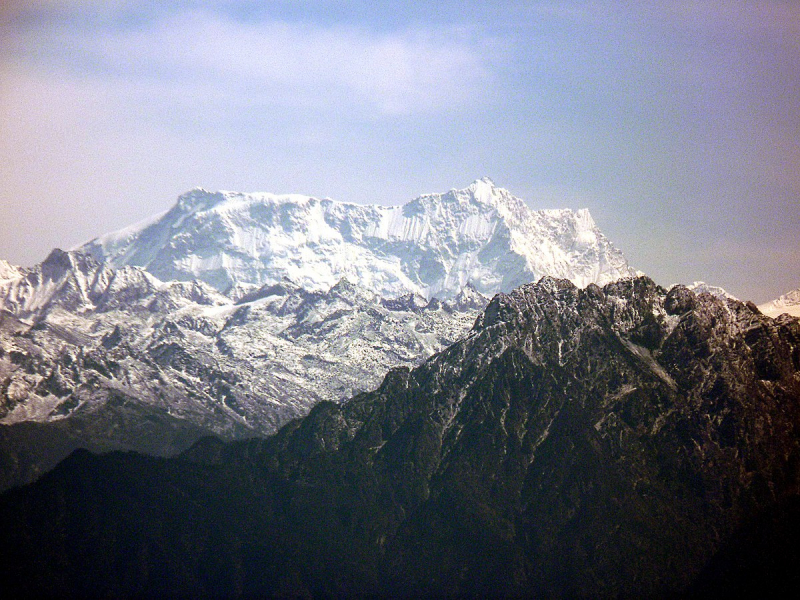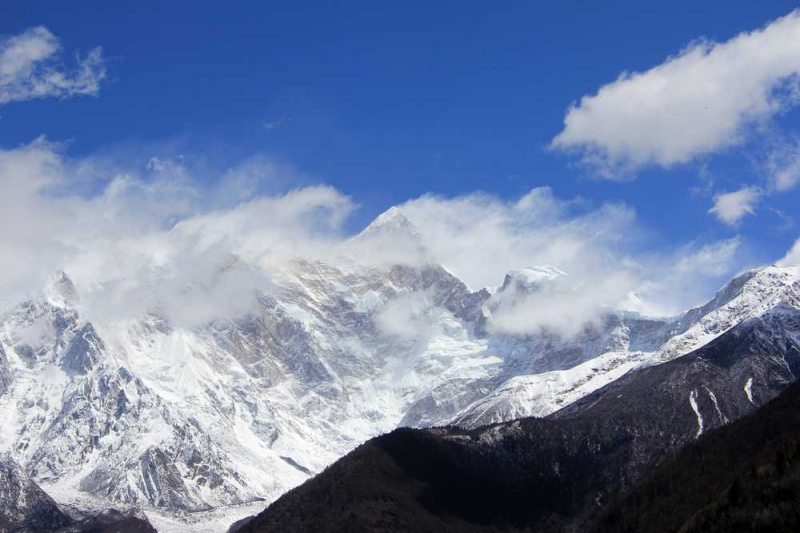Liankang Kangri

Liangkang Kangri (also known as Gangkhar Puensum North and Liankang Kangri) is a Himalayan mountain peak on the Bhutan-China boundary and near the southeastern extremity of territory claimed by both countries. Liangkang Kangri stands at a height of 7,535 meters (24,721 feet). A ridge leads 2 kilometers (1.2 miles) south-southeast to the 7,570-meter (24,840-foot) Gangkhar Puensum. Liangkang Kangri is not considered a separate mountain due to its low saddle height of 234 meters (768 feet). The Chumhari Kang, which rises 6,680-meters (21,920 feet) to the west, is reached via a ridge. The headwaters of the Lhobrak Chhu, a source river of Kuri Chhu, are formed by the Liangkanggletscher on the northwest flank and the Namsanggletscher on the eastern flank of Liangkang Kangri. The Angde Chhu catchment region includes the glacier on the southwest flank.
On 5 May 1999, a 5-member party led by Japanese mountaineer Kiyohiko Suzuki made the first ascent of Liankang Kangri. They claimed Liankang Kangri was the world's second highest unclimbed mountain, after Gangkhar Puensum. "As I cannot disclose an inner narrative behind the sudden cancellation," team member Tamotsu Nakamura told the BBC following the party's triumph, "I write only that the reason why the permit was cancelled was due of a political dispute with [the] Bhutan government." (...) I pity that Liangkang Kangri is not a particularly impressive peak."
Elevation: 7,535 m (24,721 ft)
Location: the Bhutan-China boundary
Mountain range: Himalayas








